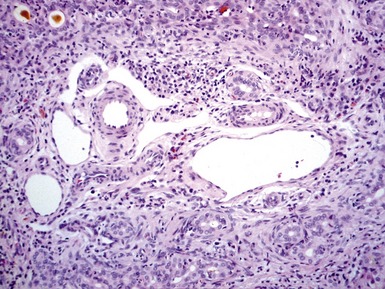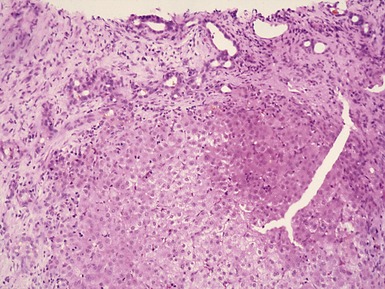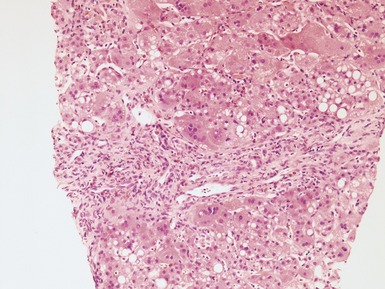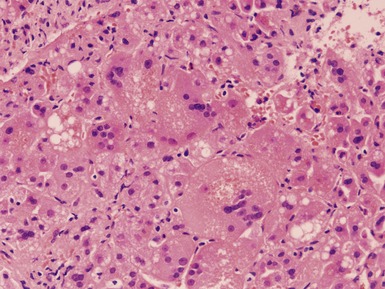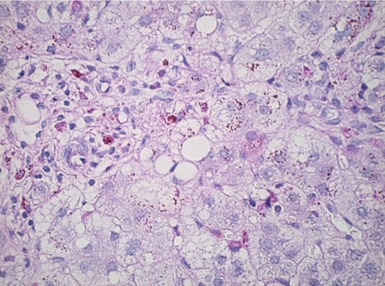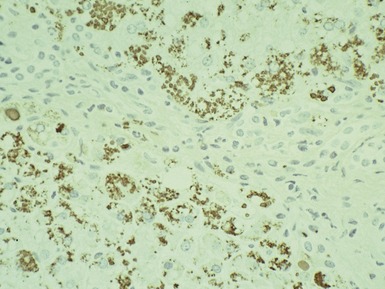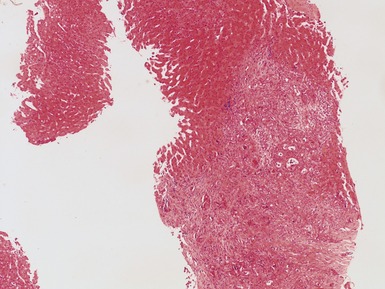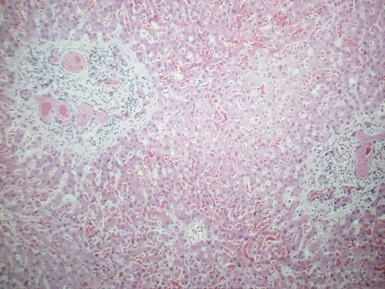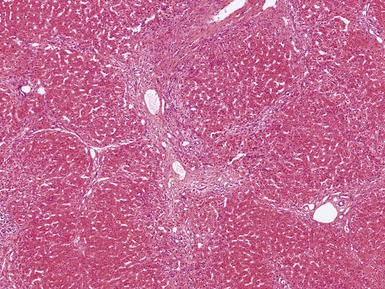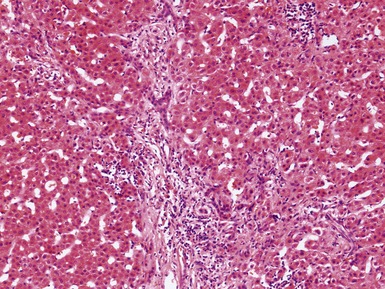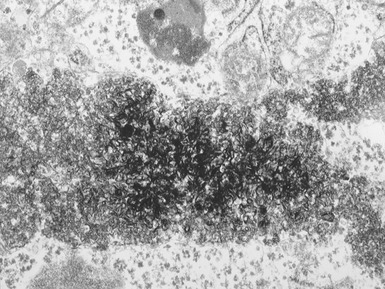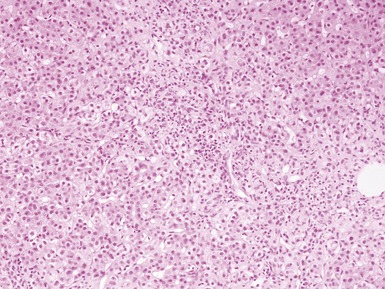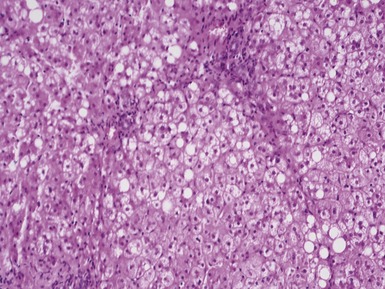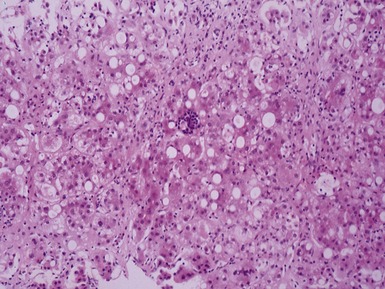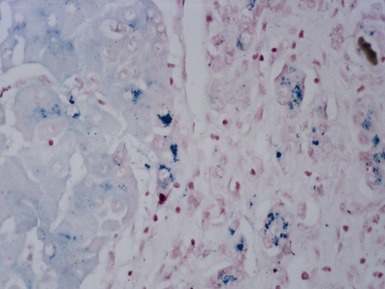CHAPTER 10 LIVER PATHOLOGY
HANDLING OF THE LIVER BIOPSY SPECIMEN
• Detailed clinicopathological correlation is essential in order to obtain maximum information from the liver biopsy
• Biopsy processing and handling is generally similar to adult liver biopsies but may require additional / different testing
PROLONGED NEONATAL CHOLESTASIS
INTRODUCTION
• Many of these diagnoses can be made or suspected on the basis of diagnostic imaging, biochemical, microbiological, virological and genetic investigations
• Striking iron overload may be a non-specific feature in a liver biopsy from a neonate with liver failure
• In infants who have been treated in neonatal intensive care units, jaundice due to episodes of sepsis and prolonged total parenteral nutrition may render interpretation of the diagnostic changes in a liver biopsy difficult
EXTRAHEPATIC BILIARY ATRESIA
Histopathological features (Figs 10.1–10.3)
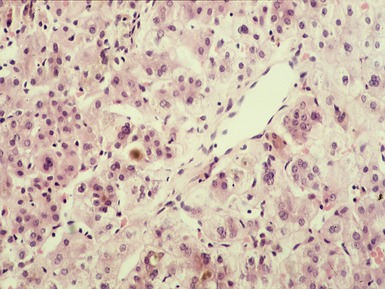
Fig 10.2 Photomicrograph of liver parenchyma demonstrating cholestasis and a small cholangiolar bile plug.
Differential diagnoses and pitfalls
• Inspissated cholangiolar bile plugs and paucity of interlobular bile ducts are most useful features in early biopsies
• Immunostaining for low molecular weight cytokeratins enhances recognition of ductular proliferation
CHOLEDEDOCHAL CYST
Clinical features
NEONATAL HEPATITIS
• The main histological differential diagnosis of prolonged neonatal cholestasis is neonatal hepatitis
ALPHA-1-ANTITRYPSIN DEFICIENCY
CYSTIC FIBROSIS
PROGRESSIVE FAMILIAL INTRAHEPATIC CHOLESTASIS (PFIC)
• Group of rare autosomally inherited disorders of transport of conjugated bile acids into the bile canaliculus
BILE ACID SYNTHESIS DEFECTS
LYMPHEDEMA–CHOLESTASIS SYNDROME
(Aagenaes syndrome; Drivdal et al 2006)



































